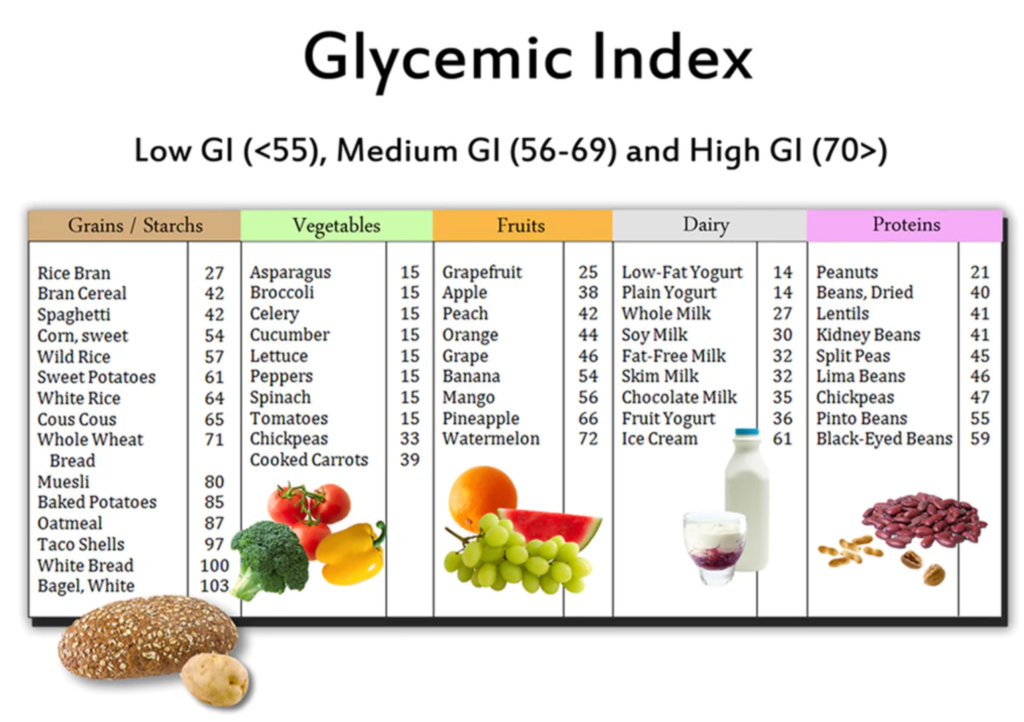Summary
The glycemic index (GI) is a way to measure how quickly foods that contain carbohydrates raise blood sugar levels. Imagine a scale from 0 to 100. Foods with a high GI (like white bread or sugary drinks) break down fast and make blood sugar rise quickly.
Foods with a low GI (like whole grains and some fruits) break down more slowly and cause a slower and smaller rise in blood sugar. Eating more low GI foods can help manage blood sugar levels, which is especially important for people with diabetes.
There are a couple of sites that I used to initially research more about the Glycaemic Index and can recommend;
https://www.nhs.uk/common-health-questions/food-and-diet/what-is-the-glycaemic-index-gi/ – Great informative introduction to the GI and the types of foods that you can eat and what to avoid or have in moderation.
https://www.diabetes.org.uk/ – A great go to guide for those with Diabetes both 1 and 2. It was my first source of information and is very informative. The only reason I started this blog was add my own flavour of tips and tricks that worked me. An average bloke that isn’t a fan if vegatables and loved pasta and sweets too much.
Just eat Low GI Food simple right?
Unfortunately no, its not that simple. Chocolate can have a low GI due to its Fat content but we know that is not a healthy choice. Go dark if you have a craving though as milk chocolate will certainly spike that blood sugar fairly quickly.
How the food is prepared and what is it eaten with also has an impact on your ability to convert it into sugar. In reality I used the GI to make more of an informed choice and move the carbs that I did enjoy towards a more healthy alternative i.e. wholewheat pasta / rice vs white.

https://www.u-perform.co.uk/blogs/news/what-is-the-glycaemic-index-gi
